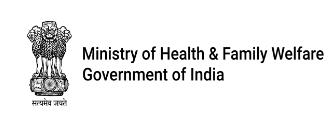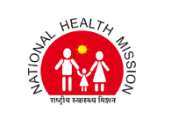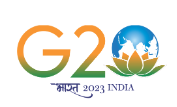





NHA launched ‘Ayushman -Apke Dwar’ (AAD) campaign on 1st March, 2021 across 33 States/UTs implementing AB PM-JAY with the intent of expediting Ayushman card creation. There is a direct co-relation between scheme uptake and Ayushman Card creation. NHA took several initiatives to ensure that Ayushman card is available with all eligible beneficiaries. As part of the campaign, NHA onboarded various card creation agencies including CSC, UTIITSL and four private agencies.
At the time of launch of the scheme, beneficiaries were issued paper based Ayushman card on self-payment of Rs 30/-; however, a decision was taken in 2021 to issue PVC Ayushman card free of cost to beneficiaries. Ayushman card is not only the most effective means of awareness, but it is also a token of entitlement and empowerment in the hand of beneficiary. Further, PVC Ayushman card improves health seeking behaviour among the beneficiaries. An Ayushman Card helps in creating a common identity of scheme across India.
Taking cue from the experience of Ayushman Apke Dwar 1.0, ‘Ayushman -Apke Dwar 2.0’ was relaunched from 1st August 2022 onwards with revamped IT platform, mobile application based card creation, and FLWs engagement for door-to-door campaign. This resulted in creation of more than 10 crore Ayushman cards in the FY 2022-23.
However, it was found that the most of the Ayushman cards were created in the rural areas. In urban areas, card creation is much more challenging due to high migration, widespread beneficiary population and non-availability of the beneficiaries at their residence during the daytime. Considering these challenges, Government of India has decided to launch Ayushman Apke Dwar 3.0 from 17th September, 2023 wherein self-registration feature for beneficiaries is being enabled. The self-registration mode would be equipped with the latest technology of face-auth based authentication along with OTP, IRIS, and fingerprint. This will ensure that any mobile device can be used for card creation. Secondly, majority of the States have started using ration card data. Hence, in AAD 3.0, Fair Price Shops (FPS) will be engaged along with other FLWs for Ayushman card creation.
For the AAD drive, NHA reached out to Department of Health and Family Welfare, Ministry of Panchayati Raj and Ministry of Rural Development seeking the support of ASHA workers, frontline workers under Panchayati Raj, and Self-Help Groups under the National Rural Livelihood Mission (NRLM) for beneficiary mobilization, e-KYC for card creation and IEC related activities.
To expedite Ayushman card creation further, NHA onboarded six card creation agencies who can reach out to beneficiaries and create Ayushman card in mission mode. Further, States/UTs were given flexibility to engage dedicated card creation agencies based on the local requirement. Further, door-to-door card creation was made easy using PM-JAY mobile application.
However, considering the existing challenges, the third version of ‘Ayushman -Apke Dwar’ i.e. AAD 3.0. is being launched. Some of the key highlights of the AAD 3.0 drive are as follows:
The Self-registration under AAD 3.0 will enable eligible beneficiaries to create Ayushman card for himself/herself/any of the family member using NHA's IT platform. The user can login into the portal to register themselves, subsequent to which they can create Ayushman Card. Once the card is approved, the same can be downloaded from the same portal.
Front Line Workers should be roped in for mass mobilization of beneficiaries during the drive. As part of the door-to-door campaign, the FLWs shall reach out to last mile beneficiaries and shall undertake the beneficiary e-KYC and/or card delivery in the village. The FLWs shall ensure that all eligible beneficiaries within the village receive Ayushman card in a timely manner.
Further, as FPSs are the direct point of contact where beneficiaries collect their monthly ration, the engagement of FPS can be crucial in expediting Ayushman card creation. Also, district administration may try to engage social workers and local public representatives who may be helpful in mass mobilization at the ground level. In this regard, it is pertinent to note that the AAD 2.0 campaign has been successful particularly in those States where FLWs were engaged.
Under AAD 3.0, the DCs/DMs shall act as the nodal officer for the drive at the district level and shall review the progress of the drive on daily basis. The Chief Medical Officer/Civil Surgeon under the overall supervision of DCs/DMs shall be responsible for devising strategies for Ayushman card saturation in the district and shall prepare village/block wise plan for Ayushman card saturation. The CMO/CS shall also ensure participation of FLWs like ASHAs during the drive. Also, DIU set-up should be used for providing necessary support to district team including training and daily monitoring. Further, DCs/DMs shall ensure village/ward wise saturation of Ayushman card and shall initiate the process for declaration of these villages/wards as ‘Ayushman Gram Panchayat’ or ‘Ayushman Urban Ward’ on achievement of other indicators.
It has been observed that the campaign has been more effective where the Ayushman card creation has been identified as a priority by the State and the performance of the districts were reviewed during the meeting with Deputy Commissioner/DM/District Collectors on a regular basis. Hence, the role of the State and the District administration will be crucial in the implementation of the AAD 3.0
The Ayushman card creation under Ayushman Apke Dwar 3.0 shall be completely funded by National Health Authority. If the e-KYC is undertaken by FLWs, NHA shall pay a sum of Rs 5 for every successful e-KYC done. Further, FLWs shall be paid Rs 3 for every Ayushman card delivered to the beneficiaries.
Further, it may also be noted that NHA has undertaken Direct Benefit Transfer (DBT) for payment to FLWs for e-KYC in couple of the States. Based on the convenience of the States, funds may be released to FLWs through DBT mode of payment.










National Health Systems Resource Centre,
NIHFW Campus, Baba Gangnath Marg,
Munirka,
New Delhi 110067
91-11-2610-8983/84/92/93


